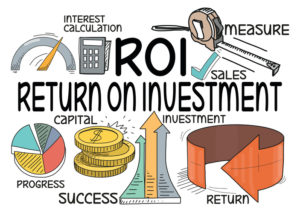
Marketing attribution has certainly come a long way from the simple lines of Google Analytics code you used to insert on your web pages. Today’s marketing attribution applications, when properly deployed, can track both online and offline lead and conversion sources with aplomb.
Our agency recently became a partner of Bizible – a marketing attribution company based out of Seattle. The company has been on a steep growth curve over the past couple years and with good reason. If marketers can optimize spend on the programs and campaigns that truly convert, then spending $2K or more per month on a tool is a no-brainer. For companies starting with marketing budgets of at least $200K per year, spending $24K to know which specific channels lead to the best conversion or pipeline metrics is certainly a worthwhile investment.
Marketing attribution tools work best for companies to be on the larger sales CRM systems, such as Salesforce or Microsoft Dynamics. If your company uses a lower tier CRM such as Sugar CRM, Zoho, etc., the integration will be much more challenging. Luckily, there are Salesforce plans today for nearly ever budget.
Crediting Touch Points Differently
One of the more interesting capabilities of the latest attribution tools is the ability to score touch points differently across the sales continuum. Attribution modeling is a powerful way to interactions that make the most impact on sales rather than scoring each touch equally.
Many companies start by scoring each prospect interaction equally, which is not necessarily the best model. For example, a first web visit should probably score higher than a follow-up social marketing post view. But you might want to score a white paper download or booth visit two weeks before the conversion higher than both initial metrics.
Most attribution tool companies offer different models and can brainstorm with you to explain which will work best for your organization’s objectives.
Digital Campaigns
Attributing digital leads and conversions works much the same way as tracking codes, such as those used with Google Analytics or marketing automation applications. Simply add provided JavaScript code snippets to your website and microsite pages. Conversion tracking from social media sites is also easy to configure.
What About Offline Channels?
Attribution of traditional campaigns, such as phone orders and trade show events, is where the new attribution models get exciting. What many marketing tool stack companies don’t address is in some B2B industries, the majority of sales are still completed by phone, or hold your breath, fax. And I’m not talking old school manufacturing companies. We have a client who gets orders from large pharmaceutical companies’ purchasing departments every day.
Some offline tools such as custom phone and fax numbers have been around for ages, but we see slow adoption. Companies that receive orders primarily by phone NEED to be able to track the origin of those calls. Call Tracking Metrics is one such tool recently recommended to our team.
Leads and conversions from events and speaking engagements can be tracked through manual entries into the sales CRM all the way through the sales cycle.
In some #B2B industries, the majority of sales are still completed by phone, or hold your breath, fax. Share on X
The New Attribution Frontier: Dynamic Personalization
Digital platform personalization tools can dynamically serve the tracking phone numbers based on visitors name, persona, title, industry or company. This tracking information is especially powerful for teams focusing on account-based marketing and revenue.
The Power of Account-Based Attribution
One of the most exciting features of today’s tools is tracking multiple people at one company involved in a sale from the first contact through completion. With more than ten individuals involved in the average purchasing decision in many verticals, being able to see the interactions of every person at the company or location in one dashboard view is especially useful, especially if your customers are large enterprises than only purchase through procurement departments or online tools, such as Ariba.
It can also reveal surprising first touch points, such as showing a certain percentage of first contacts in the sales process come from research departments versus engineering groups.
Track multiple people at one company involved in a sale with account-based #attribution. Share on XDon’t Miss the Attribution Boat
With the growing adoption of account-based marketing methods and the decreasing price points of SaaS-based tools, such as dynamic personalization, marketing attribution is a trend you should at least research, and seriously consider implementing in 2017.


